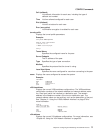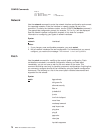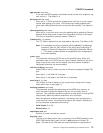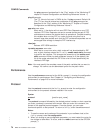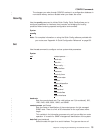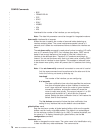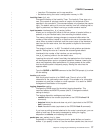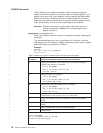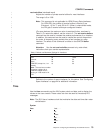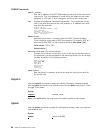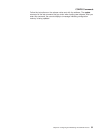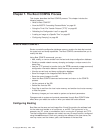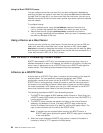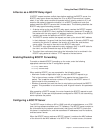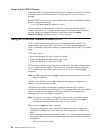
receive-buffers
interface# max#
Adjusts the number of private receive buffers for most interfaces.
The range is 5 to 1000.
Note: This command is not applicable for ISDN Primary Rate Interfaces .
For ISDN PRI, the number of receive buffers is fixed at 5 per
B-channel, 115 for T1 and 150 for E1. When in channelized mode,
the PRI gets 5 receive buffers per configured timeslot.
(On some devices, the maximum value is restricted further, as shown in
Table 9.) To restore the default, set the value to 0. The set receive-buffers
command can be used to increase the receive performance of an interface.
In addition, this command can be used to reduce flow control drops when
the router is forwarding many packets from a fast interface to a slow
interface. The effect of this command is visible on the GWCON buffer
command.
Attention: Use the set receive-buffercommand only under direct
instructions from your service representative.
Table 9. Default and Maximum Settings for Interfaces
Interface Default Maximum
ATM 80 1000
Ethernet 30 50
Serial 24 24
ISDN BRI (except 1sx, 1ux
models)
Note: The maximum number
of receive numbers for a
ISDN-BRI adapter that is
running in I-430 mode is 24.
10 30
TKR 40 120
spare-interfaces
n
Defines
n
, the number of spare interfaces, for this device. See “Configuring
Spare Interfaces” on page 44 for additional information.
Time
Use the time command to set the 2210 system clock and date, and to display the
values on the user console. These values can then be used to time-stamp ELS
messages.
Note: The 2210 has a hardware clock that maintains the date and time after router
reinitialization.
Syntax:
time
host...
list
offset
set...
sync...
CONFIG Commands
Chapter 6. Configuring and Monitoring the CONFIG Process 79
|
|
||
|
|
|
||
|
|
|
|
|
|
|
||
|
|
|
|||
||||
||||
|||
|
|
|
|
|
|
|||
|||
|
|
|



